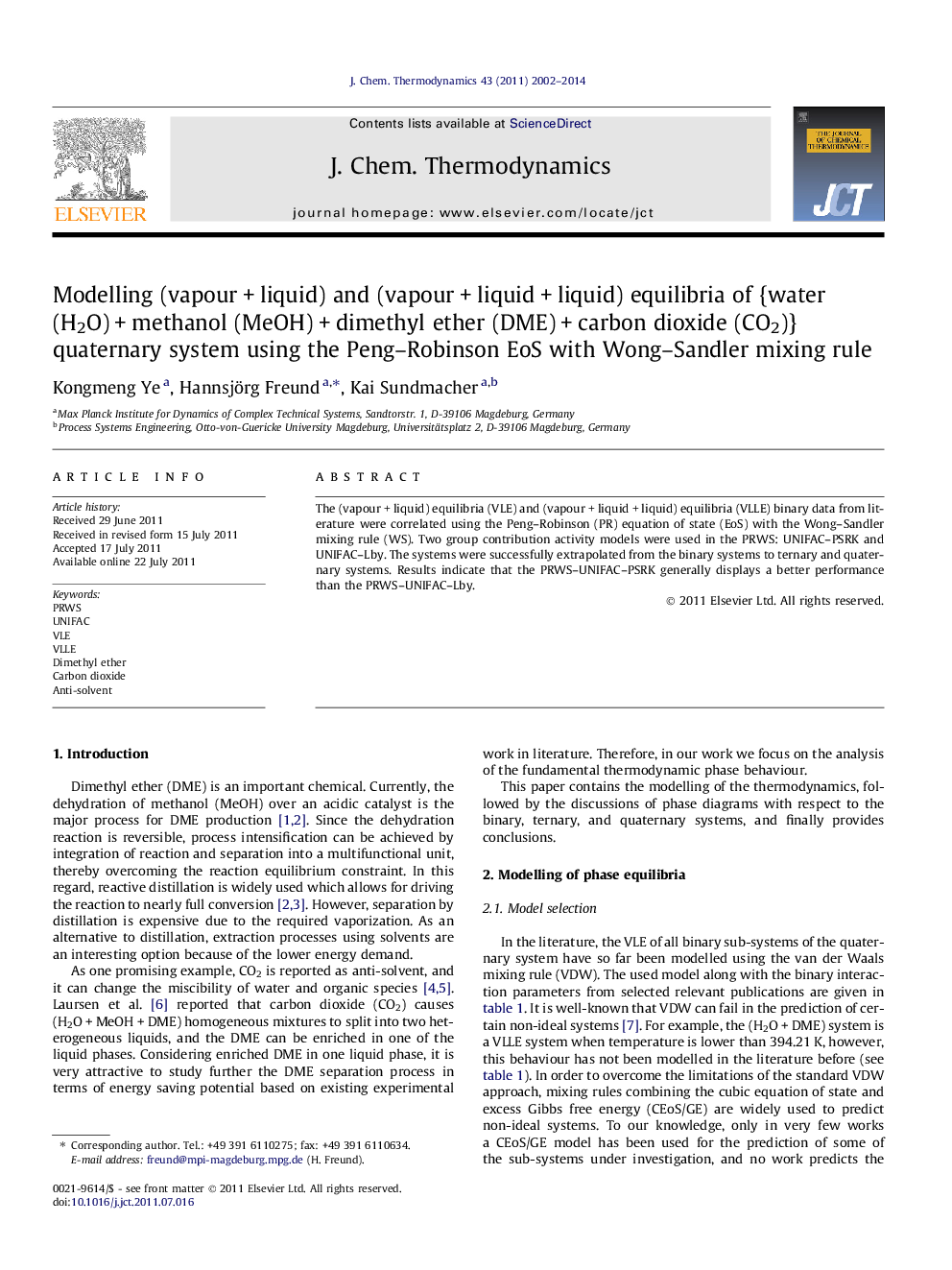| Article ID | Journal | Published Year | Pages | File Type |
|---|---|---|---|---|
| 216417 | The Journal of Chemical Thermodynamics | 2014 | 13 Pages |
The (vapour + liquid) equilibria (VLE) and (vapour + liquid + liquid) equilibria (VLLE) binary data from literature were correlated using the Peng–Robinson (PR) equation of state (EoS) with the Wong–Sandler mixing rule (WS). Two group contribution activity models were used in the PRWS: UNIFAC–PSRK and UNIFAC–Lby. The systems were successfully extrapolated from the binary systems to ternary and quaternary systems. Results indicate that the PRWS–UNIFAC–PSRK generally displays a better performance than the PRWS–UNIFAC–Lby.
► Phase behaviour modelling of H2O–MeOH–DME under pressurized CO2 (anti-solvent) using PRWS. ► PRWS–UNIFAC–PSRK has better performance than PRWS–UNIFAC–Lby in general. ► Reliable to extend the VLE and VLLE phase behaviour from binary to multicomponent systems. ► Successful prediction of the VLE and VLLE of binary, ternary, and quaternary systems. ► Potential to apply the model for designing new DME separation process.
